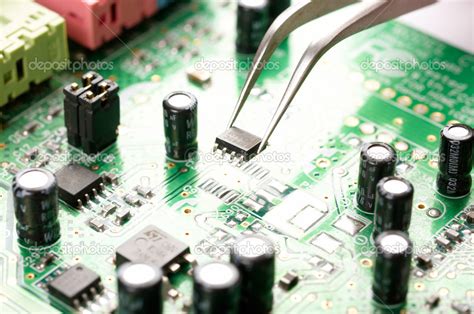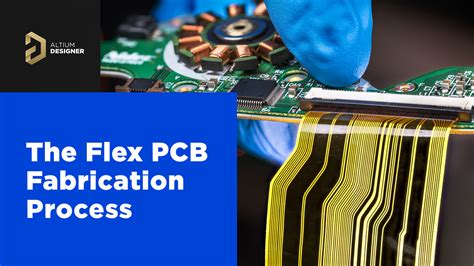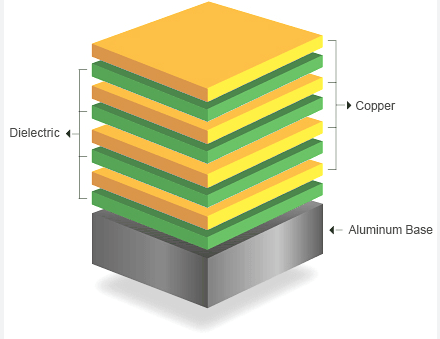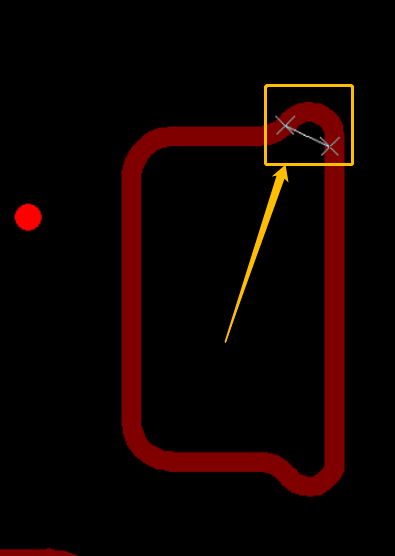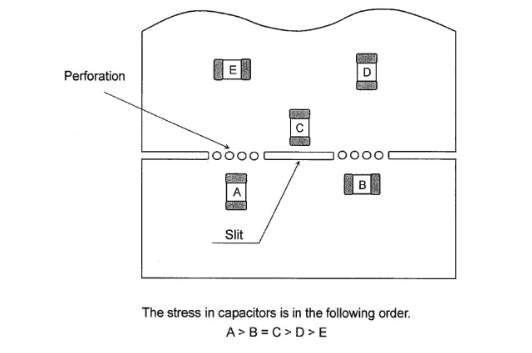Innovations in Assembled Circuit Board Design and Technology

Key Takeaways
The landscape of assembled circuit board technology is rapidly evolving, with several emerging trends that are shaping the industry. PCB assembly processes have witnessed significant advancements, driven by the need for higher efficiency and performance in electronic devices. The adoption of innovative techniques such as surface mount technology (SMT) and through-hole plating has streamlined assembly processes, ensuring precise placement of components on the pcb. Furthermore, the integration of advanced materials, including flexible substrates and high-frequency laminates, has enhanced the durability and performance of pcba products. These materials not only improve signal integrity but also contribute to overall weight reduction in electronic devices. Another critical trend is the application of multi-layered circuit boards, which maximize space utilization while maintaining efficiency–a necessity in today’s compact electronics. The move toward sustainable practices is also prominent as manufacturers increasingly focus on eco-friendly materials and processes to minimize environmental impact. Overall, these key developments underscore the importance of continuous innovation in assembled circuit board design to meet the evolving demands of the electronics market.

Emerging Trends in Assembled Circuit Board Design
The evolving landscape of pcb assembly has introduced several groundbreaking trends that are reshaping the industry. One significant advancement is the integration of advanced materials which are now being utilized to enhance the performance and longevity of assembled circuit boards. For instance, materials such as high-frequency laminates and flexible substrates are gaining popularity, allowing for faster signal transfer and improved thermal management. Additionally, the rise of smart technologies is revolutionizing how pcba is implemented in various sectors, integrating functionalities like sensors and IoT capabilities directly into the circuit design. This not only increases efficiency but also facilitates real-time monitoring and control, leading to smarter devices. Furthermore, automation in manufacturing processes is decreasing production times while ensuring high precision in the assembly of circuit boards. As these trends continue to develop, they promise significant enhancements in both the performance and reliability of modern electronics, establishing a new standard for future innovations in assembled circuit board design.

Advanced Materials for Enhanced Circuit Board Performance
The rapid evolution of pcb assembly processes has prompted a significant shift towards the utilization of advanced materials that enhance performance and reliability. Among these materials, high-frequency laminates, flexible substrates, and thermally conductive materials are notable for their capacity to improve signal integrity and heat dissipation in modern electronics. These innovative composites enable manufacturers to create PCBA designs that can withstand higher operating temperatures while maintaining electrical efficiency.
In recent years, the rise of embedded components has revolutionized assembled circuit board design, allowing for a reduction in size without compromising functionality. This integration minimizes signal path length and enhances performance within compact devices, conforming to consumer demands for smaller and more powerful electronics. Furthermore, advancements in manufacturing techniques have led to the development of environmentally friendly materials that reduce waste (as detailed in Table 1 below) while maintaining competitive performance levels.
| Material Type | Benefits | Environmental Impact |
|---|---|---|
| High-Frequency Laminates | Improved signal integrity | Low ecological footprint |
| Flexible Substrates | Compact design capability | Recyclable options available |
| Thermally Conductive Materials | Better heat management | Reduced energy consumption |
| Embedded Components | Smaller form factor, increased functionality | Minimizes material usage |
Utilizing these advanced materials not only enhances the overall performance of assembled circuit boards but also aligns with evolving industry standards focused on efficiency and sustainability. By adopting such innovations, manufacturers can push the boundaries of what is achievable in electronics, ultimately leading to more reliable and effective devices that meet the demands of today’s marketplace.
Innovative Techniques in Circuit Board Manufacturing
In the ever-evolving field of electronics, the techniques used in pcb assembly and PCBA (Printed Circuit Board Assembly) have become critical to advancing technology. One of the most notable advancements is the adoption of automated assembly processes, which leverage robotics and machine learning to improve efficiency and precision. These innovations reduce human error while increasing production speed, allowing for the creation of more intricate designs that would be difficult to achieve manually. Moreover, the integration of additive manufacturing, or 3D printing, into pcb assembly processes is revolutionizing how designs are conceived and produced. This technique allows for rapid prototyping and greater design flexibility, enabling engineers to test new ideas quickly and reduce time-to-market for many electronic devices.
Another exciting development is the use of fine-pitch components, which require precise placement during PCBA to ensure proper functionality. New aligning technologies, such as vision systems, enhance placement accuracy by providing real-time feedback during assembly. This makes it easier to incorporate highly dense circuit layouts while maintaining performance reliability.
Additionally, techniques involving thermal management during manufacturing processes are gaining traction. Effective thermal management is vital for enhancing the longevity and performance of assembled circuit boards as electronics become more compact and powerful. Techniques such as thermal pad placement or innovative cooling solutions can be integrated during pcb assembly, ensuring optimal heat dissipation.
As these advanced techniques continue to evolve, they not only redefine how we approach circuit board design but also expand the potential applications within modern electronics. The emphasis on innovation in the realm of pcba proves essential for meeting today’s demand for more efficient and high-performing electronic devices across various industries, paving the way for a smarter technological future.
Applications of Assembled Circuit Boards in Modern Electronics
Assembled circuit boards, commonly referred to as pcb assembly or pcba, play a crucial role in the landscape of modern electronics. Their versatility and adaptability make them essential across a variety of industries, from consumer electronics to automotive and medical devices. One of the key applications is in the production of compact devices, where pcba facilitates the integration of multiple functionalities into a single unit, enhancing overall performance while minimizing size.
Moreover, advancements in pcb assembly techniques have led to improved reliability and efficiency. For example, the incorporation of multi-layered circuit boards has allowed for more complex circuit designs that can handle greater data loads without compromising performance. This feature is especially beneficial in high-speed communication devices, where data transmission speed is critical.
Another area where assembled circuit boards shine is in the realm of smart technologies. Devices such as wearables and IoT gadgets rely heavily on these boards for their sophisticated functionalities. This trend highlights the importance of continual innovation in materials and methods used during the pcb assembly process to ensure that products meet evolving market demands.
“Embracing new techniques in circuit board assembly not only enables manufacturers to stay competitive but also drives advancements across various technological fields.”
As industries continue to push for greater efficiency and compact designs, the applications of assembled circuit boards will only expand, solidifying their position as a cornerstone in modern electronics development.
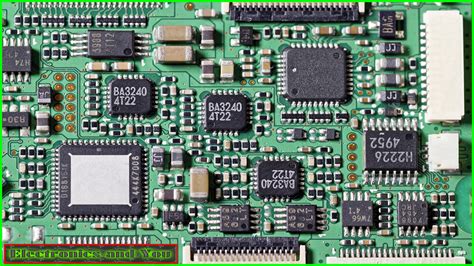
Sustainability in Circuit Board Design and Technology
In recent years, the demand for sustainability in circuit board design has gained momentum, prompting manufacturers to seek innovative approaches to reduce their environmental impact. One significant aspect of this evolution is the focus on environmentally friendly materials and processes in pcb assembly. The adoption of biodegradable substrates and non-toxic components not only aligns with regulatory requirements but also meets the growing consumer expectations for responsible manufacturing. Furthermore, modern pcba techniques enable efficient recycling and recovery of materials, minimizing waste throughout the product lifecycle. The integration of energy-efficient manufacturing processes is another crucial step toward sustainability, reducing energy consumption during production. Additionally, companies are exploring digital fabrication technologies that promise to streamline the circuit board fabrication process while reducing excess material usage. Overall, as industries continue to prioritize eco-friendly practices, these advancements signify a pivotal shift toward more sustainable practices in circuit board design and technology, ensuring that future innovations not only enhance performance but also contribute positively to environmental goals.
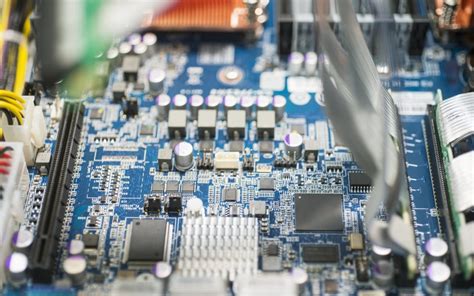
The Impact of Multi-layered Circuit Boards on Efficiency
The design and utilization of multi-layered circuit boards greatly influence the efficiency and performance of modern electronic devices. As the demand for smaller, faster, and more powerful electronics grows, the complexity of pcb assembly has increased correspondingly. Multi-layered pcba allows for a greater number of components to be integrated into a compact space, thereby optimizing layout and reducing signal interference. This enhancement is particularly vital in high-frequency applications where maintaining signal integrity is essential. The layering process not only contributes to miniaturization but also enhances thermal management capabilities by distributing heat more evenly across multiple layers. Furthermore, advancements in materials used in multi-layered circuit boards, such as low-loss dielectrics, contribute to improved electrical performance, ultimately empowering device manufacturers to create products that meet stringent reliability standards. In conclusion, multi-layered designs are a significant factor in advancing the efficiency and capabilities of assembled circuit boards in today’s competitive electronics market.
Integration of Smart Technologies in Circuit Board Design
The integration of smart technologies into pcb assembly has revolutionized modern circuit board design, enhancing both functionality and performance. Smart technologies, such as the Internet of Things (IoT) and artificial intelligence (AI), enable pcba to optimize processes by providing real-time monitoring and adaptive responsiveness. With the rise of wearable devices, smart appliances, and automated systems, circuit boards have become increasingly complex, necessitating advanced design techniques that promote efficiency. New innovations in sensor integration allow for smaller and more effective assembled circuit boards, where components communicate seamlessly, reducing signal interference and power consumption. Furthermore, the utilization of advanced materials such as flexible substrates not only improves the durability of pcb assembly but also supports miniaturization trends within the industry. As integrating smart technologies continues to evolve, it’s essential for engineers to explore multiple layering techniques within their designs, which can significantly enhance signal integrity while accommodating a higher component density. This trend marks a substantial shift towards more intelligent pcba solutions that are not only robust but also adaptable to future technological advancements.
Conclusion
In summary, the advancements in pcb assembly and overall pcba design have significantly transformed the landscape of modern electronics. As technologies continue to evolve, the integration of innovative materials and manufacturing techniques has enhanced both the performance and efficiency of assembled circuit boards. The rise of multi-layered circuit boards has enabled manufacturers to pack more functionality into smaller devices, which is crucial for meeting the growing demands of consumers. Furthermore, with an increasing emphasis on sustainability in circuit board design, industries are now able to utilize eco-friendly materials and processes that do not compromise on quality or functionality. The incorporation of smart technologies into pcb assembly processes is also paving the way for greater automation and precision in manufacturing, leading to improved product reliability. As we look towards the future, it is evident that ongoing advancements will continue to redefine what is possible in pcba, ensuring that these components remain at the forefront of electronic innovation.

FAQs
What is pcb assembly?
Pcb assembly refers to the process of designing and fabricating the assembled circuit board, also known as PCBA (Printed Circuit Board Assembly). This involves the integration of electronic components onto a PCB, which plays a critical role in modern electronic devices.
What are the benefits of using advanced materials in PCBA?
Advanced materials enhance circuit board performance by providing superior conductivity and durability, which leads to improved efficiency and reliability in electronic applications. These materials can withstand higher temperatures and ensure better signal integrity.
How do innovative techniques influence assembled circuit boards?
Innovative techniques such as surface mount technology (SMT) and through-hole technology streamline the pcb assembly process, making it faster and more precise. These methods reduce production costs while enhancing overall quality.
What applications utilize assembled circuit boards?
Assembled circuit boards are crucial in various sectors, including consumer electronics, automotive systems, telecommunications, and industrial automation. Their versatility allows them to meet diverse functionality demands.
How is sustainability addressed in circuit board design?
Sustainability in circuit board design is achieved through the use of eco-friendly materials and processes that minimize waste and energy consumption. Companies are increasingly focusing on creating products that are not only efficient but also environmentally responsible.
For further insights into pcb assembly, please click here: Visit Andwin PCB for More Information

